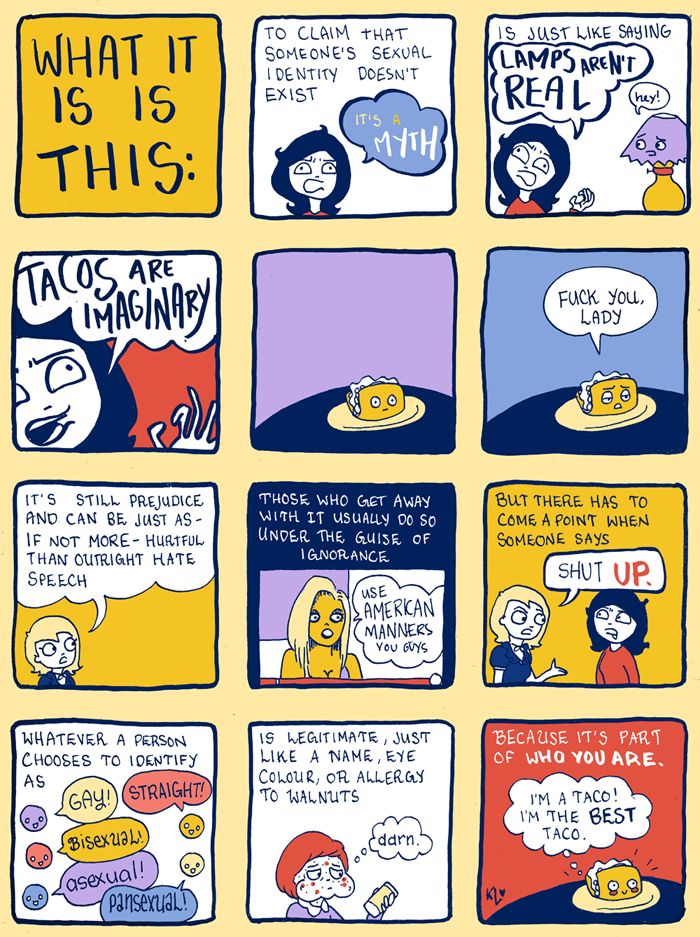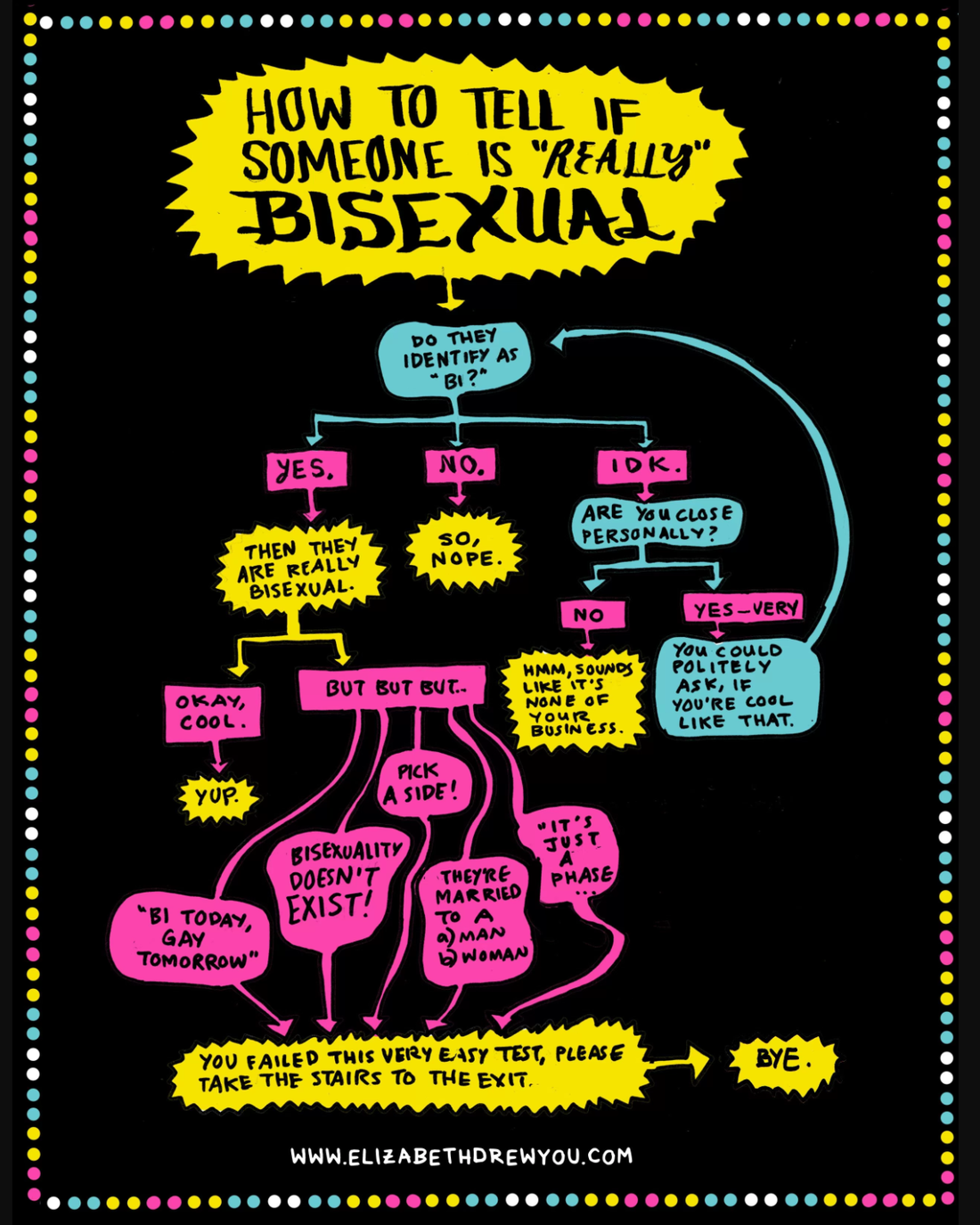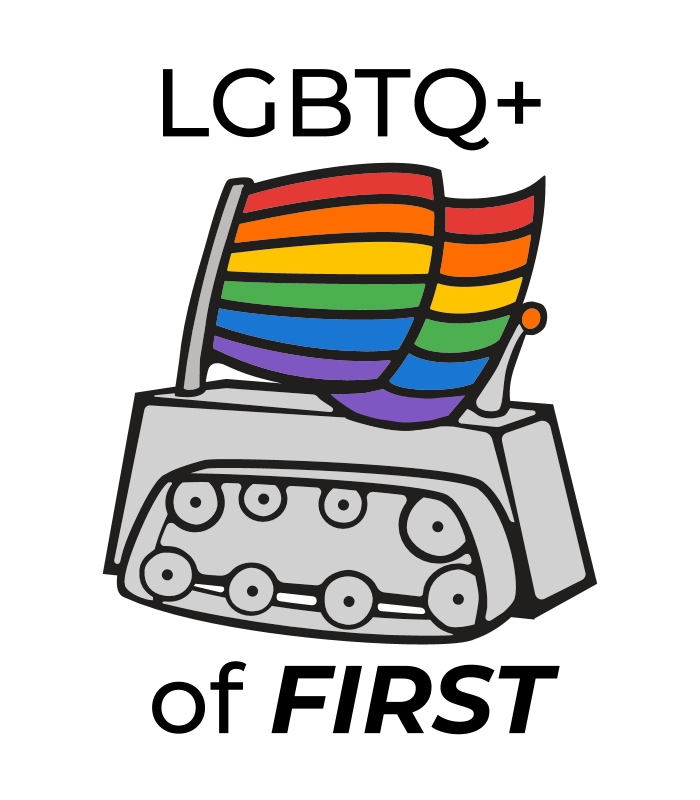|
Ah, Pride month is here. I know this because Target and Macy’s both have their displays of requisite rainbow clothing, a garment to wear that says, “look at me! I’m-“ I’m what, exactly? Gay? Queer? Something on a spectrum to be labeled? And why is this month different than other months?
Pride Month, like many things in culture and history, is complicated. Its history is a wonderful mix of defiance, joy, sadness, and most certainly, passion. To me, Pride Month is a celebration of who we are, a reminder of where we’ve been, a protest against injustices, and a joyous hope for a better world to come. As a celebration, Pride month allows us all to be who we are, in whatever form that takes. My name is Tom, I use he/him pronouns, and I identify as Bi. A few months ago, I was at a performance of the Philadelphia Gay Men’s Chorus. One of the men had a service dog, and during the question and answer period a high schooler asked “whose dog was it?” The gentleman shared an answer I will not soon forget. He said that the service dog was a promise to his longtime partner who died from AIDS. He would continue to use his voice to make a difference in this world, fighting for equality and rights. Not that long ago, being gay meant not having the same rights as others, with the very real possibility of being arrested. Newsweek summarized the complex history of Pride here: https://www.newsweek.com/pride-month-2019-stonewall-50th-anniversary-history-lgbtq-america-history-1440491. Sophia Waterfield writes, “You have to understand that in the 1950s all U.S. states had laws criminalizing same-sex sexual behavior. You could be arrested and even imprisoned for even proposition[ing] someone for sex in public. Lesbians and gay men were routinely fired from their jobs if their boss or coworkers discovered their sexual orientation. “The laws criminalizing same-sex activity gradually disappeared from state penal codes over the years but the U.S. Supreme Court only called them unconstitutional in 2003 in Lawrence v. Texas.” I find it amazing that the current generation of youth are so accepting of others’ sexual and gender identities. Is the world at 100% acceptance? I would be naive to say yes. But it’s far better than even a decade or two ago, which is great progress. Each Pride event is an opportunity to demand acceptance, to demand the same basic rights as any others - human rights. The right to exist, the right to be free in one’s actions, the right to love, the right to body autonomy, the right to dance - every right that is afforded to heterosexual, cisgender people should be applied in the same positive manner to everyone on the gender and sexuality spectrums. Pride reminds us what the best in all of us can be - welcoming, inclusive, and, well, proud. I love being a part of this wonderful community of LGBTQ+, but there are times where I feel I don’t belong. I sometimes wonder, “am I ‘gay’ enough to be a part of a conversation?” Because I have done some things and not others, do those things make me less of an LGBTQ+ person? As I look back at the history of Pride, and where we are today, seeing the amazing people who are so welcoming into the LGBTQ+ group, I can answer my own question - if you identify in any way or part of this group, then you are a part of this amazing band of humanity. So, here I am with this message to you. Pride month is just that - a moment to let yourself be proud. Be proud of who you are. Be proud of where we’ve come as a group. Be proud of where we’re going. I may even buy something rainbow this year. Bisexuality is often joked about being “invisible” within the community. Although the number of bisexual people is about equal to gay and lesbian people combined, there is a lot of misinformation about it. So what is bisexuality? There are many different definitions, but the most popular is “attraction towards two or more genders”. http://kateordiecomics.com/archive/biphobia/ Now let’s go through some of the misconceptions about bisexuality: 1. Bisexuality is transphobic Bisexuality is not inherently transphobic. Someone who is bisexual can be attracted to men and women, women and nonbinary people, or any other combination of genders as long as it’s at least two. Trans men and women are men and women, so if a bisexual person is attracted to men and women, trans people are included in that. Some bisexual people can be transphobic, but it has nothing to do with their sexuality. 2. Everyone is a bit bi Maybe you are bisexual, but not everyone is. This is completely untrue, and it’s mostly used to discredit bisexual people. Some people are gay, some people are straight, some people are ace, some people are bi, and so on. Everyone’s sexuality should be equally respected and acknowledged, instead of pretending that everyone is bisexual. The beauty of sexuality and gender is that we are all different; we shouldn’t destroy that. 3. It’s just a phase/internalized homophobia Some people do identify as bisexual before realizing they’re gay, but many more people identify as straight before realizing they’re not. It’s okay to realize you aren’t actually bisexual, but the majority of people don’t suddenly realize they were wrong. Most people who are bisexual are as certain about their identity as straight people. No matter what, everyone’s identity should be respected. 4. Bisexual people are more likely to cheat Bisexual people are as likely to cheat as straight and gay people. They may be attracted to more genders, but just like a straight man doesn’t want to date every woman he sees, a bisexual person does not want to date every person they see. 5. Bisexual people get straight-passing privilege Yes, bisexual people are usually assumed straight when dating a gender different to their own. No, this is not a “privilege”. Anybody is able to pass as straight if they hide enough of themselves, and that is why “coming out” is a common event in the LGBTQ+ community. The ability to be ourselves is the entire reason the LGBTQ+ movement started. 6. Bisexual people are just pretending to be bi for attention Ok, you caught us, all bisexual people want attention. That’s exactly why I dislike everyone in a classroom watching me to the point that I can barely remember to not speak at 1000 miles per hour. In all seriousness though, bisexuality is no more a plea for attention than being straight is. If anything, the biphobia and homophobia that come with being bisexual make it a terrible way to get more attention. 7. Bi people are half gay, half straight Bisexuality is its own sexuality. It is not half of anything. One metaphor to explain this is the color purple. You don’t say, “Oh, that color is half blue and half red”, you just say it’s purple. Bisexual people can have different amounts of attraction towards different genders, but they’re still bisexual, just like different shades of purple are still purple. 8. Bi people in a “straight” relationship on TV aren’t real representation Any relationship with anyone from the LGBTQ+ community is not straight, no matter what gender the people in the relationship are. Although some representation, like a woman leaving her girlfriend for a guy, contributes to other stereotypes and is bad representation, a bisexual man dating a woman is as valid as a bisexual man dating a man. Bisexual people already face a lack of good representation, so the representation we have is very important. 9. Bi people love puns Yes, because puns are pan-tastic. I know, I can’t bi-lieve I made such a terrible pun either… Some bisexual-inclusive charities:
http://www.thetrevorproject.org https://www.hrc.org https://www.glad.org The notion of “coming out” is one that can be intimidating to a lot of people. Formally telling the people in your life about your sexuality seems a daunting task. This, among other reasons, is why I personally choose to be extremely open about my sexuality, with people in my regular life and on my robotics team. I openly discuss/mention my sexuality with people in my life and on my team, but I don’t make a point of specifically coming out. I am unapologetically bisexual.
But it wasn’t always that way. In order to live this way, being able to feel comfortable and secure is absolutely essential. When everyone around you knows that you’re bi (or any other orientation/identity), you will face some judgement and questions. You cannot let those things put doubt in your mind, you know who you are better than anyone else does. Reaching this point of stability in your identity can take a long time. For me it took several months, but for some people it could take years. That is okay. Once you reach this point, you may make the choice to be extremely open with your identity, or you may wish to be more private or reserved. The decision of how open to be with your sexuality/identity is entirely yours. But I’d like to share some pros and cons of being as open as I am and how they affected my decision to be who I am so publicly. Pros
Cons
How I Made My Decision Here I listed a few of the major pros and cons I considered when I decided I wanted to be extremely open. These can differ from person to person and their impact and importance can vary as well.Deciding whether you want to be more reserved or extremely open with your sexuality/identity is entirely up to you. You have to be comfortable in your own skin and be sure of who you are. You also have to evaluate the safety of being open about your sexuality in your current situation. It also has to be something you want, it simply isn’t for anyone. But for me, it has worked out very well and made me quite happy. Hopefully you find what’s comfortable for you and it makes you happy. -Hailee 1747 |
About LGBTQ+ of FIRST
LGBTQ+ of FIRST is a student run organization that advocates awareness and acceptance of LGBTQ+ students, mentors, and volunteers of FIRST Robotics. LGBTQ+ of FIRST reaches out to over 1000 members across the FIRST regions and fronts multiple outreach endeavors. Archives
June 2024
Categories
All
|




 RSS Feed
RSS Feed
